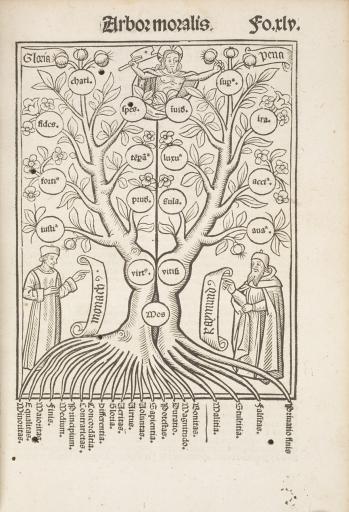Arbor Moralis (Moral Tree), Ramon Llull
Artwork Overview
Ramon Llull, artist
Arbor Moralis (Moral Tree),
1469
Portfolio/Series title: Arbor X scientiae [sic] venerabilis et caelitus illuminati Patris Raymundi Lullii ... : liber ad omnes scientias utilissimus. (The Tree of Science of the August and Heavenly Illuminated Father Ramon Llull: the Most Useful Book According to All Science) Lugduni: Impensis...Guilhelmi Huyon, & Constantini Fradin..., 1515 (Lyon: At great cost...Guilhelmi Huyon, & Constantini Fradin..., 1515)
Credit line: Spencer Research Library, Department of Special Collections, Summerfield C1469 item 1
Accession number: EL2009.019
Not on display
If you wish to reproduce this image, please submit an image request

